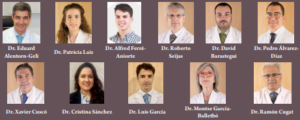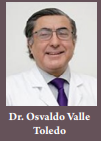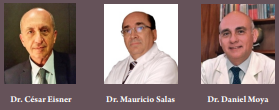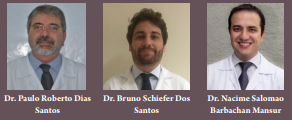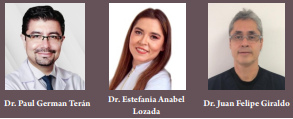Review Article | Volume 1 | Issue 1 | JRS December 2021 | Page 21-25 | W. Leonardo Guiloff , Ondrej Prouza , Dragana Žarković. DOI: 10.13107/jrs.2021.v01.i01.013
Author: W. Leonardo Guiloff [1], Ondrej Prouza [2], Dragana Žarković [2]
[1] Department of Orthopedic Surgery of Davila Clinic, Santiago Chile, Past President Onlat-Achitoc, Santiago, Chile.
[2] Department of Anatomy and Biomechanics, Faculty of Physical Education and Sports, Charles
University, Prague, Czech Republic.
Address of Correspondence
Dr. W. Leonardo Guiloff, MD
Department of Orthopedic Surgery of Davila Clinic, Santiago Chile, Past President Onlat-Achitoc, Santiago, Chile.
E-mail: lguiloff@davila.cl
Abstract
Low-level laser therapy (LLLT) and high-intensity laser therapy (HILT) have emerged as a therapeutic alternative suitable for a wide range of medical conditions. The main advantage of high-intensity laser over LLLT is its ability to deliver a much higher dose in a shorter time while achieving deeper penetration into the affected tissue and producing a thermal effect. Although HILT, provides very satisfactory clinical results, more clinical research is require to justify its massive use.
Keywords: Low-level laser therapy, High-level laser therapy, Biostimulation, Phototherapy.
References:
1. Huang C, Holfeld J, Schaden W, Orgill D, Ogawa R. Mechanotherapy: Revisiting physical therapy and recruiting mechanobiology for a new era in medicine. Trends Mol Med 2013;19:555-64.
2. Moya D, Ramón S, Schaden W, Wang CJ, Guiloff L, Cheng JH. The role of extracorporeal shockwave treatment in musculoskeletal disorders. J Bone Joint Surg Am 2018;100:251-63.
3. Brañes J, Contreras HR, Cabello P, Antonic V, Guiloff LJ, Brañes M. Shoulder rotator cuff responses to extracorporeal shockwave therapy: Morphological and immunohistochemical analysis. Shoulder Elbow 2012;4:163-8.
4. Taylor N. Laser: The Inventor, the Nobel Laureate, and the Thirty Year Patent war. New York: Nick Taylor Simon Schuster; 2000.
5. Myers R, Dixon R. Who invented the laser: An analysis of the early patents. In: Historical Studies in the Physical and Biological Sciences. Vol. 34. California: University of California Press; 2003. p. 115-49.
6. Mester E. Risultati clinici di stimolazione laser e studi sperimentali circa il meccanismo di azione [Clinical results of laser stimulation and experimental studies on its mechanism of action]. Minerv Med. 1981;72:2195-9.
7. Huang YY, Chen AC, Carroll JD, Hamblin MR. Biphasic dose response in low level light therapy. Dose Response 2009;7:358-83.
8. Wickenheisser VA, Zywot EM, Rabjohns EM, Lee HH, Lawrence DS, Tarrant TK. Laser light therapy in inflammatory, musculoskeletal, and autoimmune disease. Curr Allergy Asthma Rep 2019;19:37.
9. Cotler HB, Chow RT, Hamblin MR, Carroll J. The use of low level laser therapy (LLLT) for musculoskeletal pain. MOJ Orthop Rheumatol 2015;2:00068.
10. Clijsen R, Brunner A, Barbero M, Clarys P, Taeymans J. Effects of low-level laser therapy on pain in patients with musculoskeletal disorders: A systematic review and meta-analysis. Eur J Phys Rehabil Med 2017;53:603-10.
11. Konstantinovic LM, Kanjuh ZM, Milovanovic AN, Cutovic MR, Djurovic AG, Savic VG, et al. Acute low back pain with radiculopathy: A double-blind, randomized, placebo-controlled study. Photomed Laser Surg 2010;28:553-60.
12. Konstantinovic LM, Cutovic MR, Milovanovic AN, Jovic SJ, Dragin AS, Letic MD, et al. Low-level laser therapy for acute neck pain with radiculopathy: A double-blind placebo-controlled randomized study. Pain Med 2010;11:1169-78.
13. Chow RT, Johnson MI, Lopes-Martins RA, Bjordal JM. Efficacy of low-level laser therapy in the management of neck pain: A systematic review and meta-analysis of randomised placebo or active-treatment controlled trials. Lancet 2009;374:1897-908.
14. Djavid GE, Mehrdad R, Ghasemi M, Hasan-Zadeh H, Sotoodeh-Manesh A, Pouryaghoub G. In chronic low back pain, low level laser therapy combined with exercise is more beneficial than exercise alone in the long term: A randomised trial. Aust J Physiother 2007;53:155-60.
15. Momenzadeh S, Kiabi FH, Moradkhani M, Moghadam MH. Low level laser therapy (LLLT) combined with physical exercise, a more effective treatment in low back pain. J Laser Med Sci 2012;3:67-70.
16. Tumilty S, Munn J, McDonough S, Hurley DA, Basford JR, Baxter GD. Low level laser treatment of tendinopathy: A systematic review with meta-analysis. Photomed Laser Surg 2010;28:3-16.
17. Bjordal JM, Lopes-Martins RA, Iversen VV. A randomised, placebo controlled trial of low level laser therapy for activated Achilles tendinitis with microdialysis measurement of peritendinous prostaglandin E2 concentrations. Br J Sports Med 2006;40:76-80; discussion 76-80.
18. Bjordal JM, Lopes-Martins RA, Joensen J, Couppe C, Ljunggren AE, Stergioulas A, et al. A systematic review with procedural assessments and meta-analysis of low level laser therapy in lateral elbow tendinopathy (tennis elbow). BMC Musculoskelet Disord 2008;9:75.
19. Bjordal JM, Couppé C, Chow RT, Tunér J, Ljunggren EA. A systematic review of low level laser therapy with location-specific doses for pain from chronic joint disorders. Aust J Physiother. 2003;49:107-16.
20. Tascioglu F, Armagan O, Tabak Y, Corapci I, Oner C. Low power laser treatment in patients with knee osteoarthritis. Swiss Med Wkly 2004;134:254-8.
21. Brosseau L, Welch V, Wells G, DeBie R, Gam A, Harman K, et al. Low level laser therapy (Classes I, II and III) for treating osteoarthritis. Cochrane Database Syst Rev 2004;3:CD002046.
22. Stasinopoulos DI, Johnson MI. Effectiveness of low-level laser therapy for lateral elbow tendinopathy. Photomed Laser Surg 2005;23:425-30.
23. Enwemeka CS, Parker JC, Dowdy DS, Harkness EE, Sanford LE, Woodruff LD. The efficacy of low-power lasers in tissue repair and pain control: A meta-analysis study. Photomed Laser Surg 2004;22:323-9.
24. Hopkins JT, McLoda TA, Seegmiller JG, Baxter GD. Low-level laser therapy facilitates superficial wound healing in humans: A triple-blind, sham-controlled study. J Athl Train 2004;39:223-9.
25. Fukuda VO, Fukuda TY, Guimarães M, Shiwa S, de Lima Bdel C, Martins RÁ, et al. Short-term Eefficacy of low-level laser therapy in patients with knee osteoarthritis: A randomized placebo-controlled, double-blind clinical trial. Rev Bras Ortop 2015;46:526-33.
26. Conti PC. Low level laser therapy in the treatment of temporomandibular disorders (TMD): A double-blind pilot study. Cranio 1997;15:144-9.
27. Brosseau L, Robinson V, Wells G, Debie R, Gam A, Harman K, et al. Low level laser therapy (Classes I, II and III) for treating rheumatoid arthritis. Cochrane Database Syst Rev 2005;4:CD002049.
28. Stiglić-Rogoznica N, Stamenković D, Frlan-Vrgoc L, Avancini-Dobrović V, Vrbanić TS. Analgesic effect of high intensity laser therapy in knee osteoarthritis. Coll Antropol 2011;35 Suppl 2:183-5.
29. Prochazka M. “Class IV Laser in Noninvasive Laser Therapy.” Laser Partner; 2006. Available from: https://www.laserpartner.org/lasp/web/en/2003/0069html [Last access date 2006].
30. Bettencourt F. Effects of class IV laser in knee osteoarthritis: A randomized control trial. J Arthritis 2020;9:1-289.
31. Vescovi P, Merigo E, Manfredi M, Meleti M, Fornaini C, Bonanini M, et al. Nd: YAG laser biostimulation in the treatment of bisphosphonate-associated osteonecrosis of the jaw: Clinical experience in 28 cases. Photomed Laser Surg 2008;26:37-46.
32. Santamato A, Solfrizzi V, Panza F, Tondi G, Frisardi V, Leggin BG, et al. Short-term effects of high-intensity laser therapy versus ultrasound therapy in the treatment of people with subacromial impingement syndrome: A randomized clinical trial. Phys Ther 2009;89:643-52.
33. Wyszyńska J, Bal-Bocheńska M. Efficacy of high-intensity laser therapy in treating knee osteoarthritis: A first systematic review. Photomed Laser Surg 2018;36:343-53.
34. Graudenz K, Raulin C. Von einsteins quantentheorie zur modernen lasertherapie: Historie des lasers in der dermatologie und ästhetischen medizin. Hautarzt 2003;7:575-82.
35. Kojevnikov A. Nikolay Gennadiyevich Basov. Encyclopedia Britannica; 2021. Available from: https://www.britannica.com/biography/Nikolay-Basov [Last accessed on 2021 Aug 2].
36. Charles H. Townes Biographical. NobelPrize.org. Nobel Prize Outreach AB 2021. Sun. 31 Oct; 2021. Available from: https://www.nobelprize.org/prizes/physics/1964/townes/biographical [Last accessed on 2021 Aug 2].
37. Schawlow AL. Schawlow Biographical. NobelPrize.org. Nobel Prize Outreach AB 2021. Sun. 31 Oct; 2021. Available from: https://www.nobelprize.org/prizes/physics/1981/schawlow/biographical [Last accessed on 2021 Aug 2].
38. Maiman TH. Stimulated optical radiation in ruby. Nature 1960;187:493-4.
39. Sommer AP, Pinheiro AL, Mester AR, Franke RP, Whelan HT. Biostimulatory windows in low-intensity laser activation: Lasers, scanners, and NASA’s light-emitting diode array system. J Clin Laser Med Surg 2001;19:29-33.
40. Nouri K, Ballard CJ. Laser therapy for acne. Clin Dermatol 2006;24:26-32.
41. Evans DH, Abrahamse H. Efficacy of three different laser wavelengths for in vitro wound healing. Photodermatol Photoimmunol Photomed 2008;24:199-210.
42. Whelan HT, Smits RL Jr., Buchman EV, Whelan NT, Turner SG, Margolis DA, et al. Effect of NASA light-emitting diode irradiation on wound healing. J Clin Laser Med Surg 2001;19:305-14.
43. Peplow PV, Chung TY, Baxter GD. Laser photobiomodulation of wound healing: A review of experimental studies in mouse and rat animal models. Photomed Laser Surg 2010;28:291-325.
44. Conlan MJ, Rapley JW, Cobb CM. Biostimulation of wound healing by low-energy laser irradiation. A review. J Clin Periodontol 1996;23:492-6.
45. Woodruff LD, Bounkeo JM, Brannon WM, Dawes KS, Barham CD, Waddell DL, et al. The efficacy of laser therapy in wound repair: A meta-analysis of the literature. Photomed Laser Surg 2004;22:241-7.
46. Dundar U, Turkmen U, Toktas H, Solak O, Ulasli AM. Effect of high-intensity laser therapy in the management of myofascial pain syndrome of the trapezius: A double-blind, placebo-controlled study. Lasers Med Sci 2015;30:325-32.
47. Kneebone WJ, Crna DC, DIHom CN. Practical applications of low level laser therapy. Pract Pain Manag 2006;6:34-40.
48. Marshall RP, Vlková K. Spectral dependence of laser light on light-tissue interactions and its influence on laser therapy: An experimental study. Insights Biomed 2020;5:1.
49. Baack HO. Comparison of energy spread homogeneity in automated and manual class 4 laser therapy. Res Rev 2020;9:1-9.
50. Khalkhal E, Razzaghi M, Rostami-Nejad M, Rezaei-Tavirani M, Heidari Beigvand H, Tavirani MR. Evaluation of laser effects on the human body after laser therapy. J Lasers Med Sci 2020;11:91-7.
51. Tseng SH, Bargo P, Durkin A, Kollias N. Chromophore concentrations, absorption and scattering properties of human skin in-vivo. Opt Express 2009;17:14599-617.
52. Chen CH, Tsai JL, Wang YH, Lee CL, Chen JK, Huang MH. Low-level laser irradiation promotes cell proliferation and mRNA expression of Type I collagen and decorin in porcine Achilles tendon fibroblasts in vitro. J Orthop Res 2009;27:646-50.
53. Karu TI, Hode L. Ten Lectures on Basic Science of Laser Phototherapy. Grängesberg: Prima Books; 2007.
54. Mester A, Mester A. The history of photobiomodulation: Endre mester (1903-1984). Photomed Laser Surg 2017;35:393-4.
55. Peplow PV, Chung TY, Baxter GD. Laser photobiomodulation of proliferation of cells in culture: A review of human and animal studies. Photomed Laser Surg 2010;28 Suppl 1:S3-40.
56. Karu T. Mitochondrial mechanisms of photobiomodulation in context of new data about multiple roles of ATP. Photomed Laser Surg 2010;28:159-60.
57. Holden PK, Li C, Da Costa V, Sun CH, Bryant SV, Gardiner DM, et al. The effects of laser irradiation of cartilage on chondrocyte gene expression and the collagen matrix. Lasers Surg Med 2009;41:487-91.
58. Chen CH, Hung HS, Hsu SH. Low-energy laser irradiation increases endothelial cell proliferation, migration, and eNOS gene expression possibly via PI3K signal pathway. Lasers Surg Med 2008;40:46-54.
59. Zati A, Desando G, Cavallo C, Buda R, Giannini S, Fortuna D, et al. Treatment of human cartilage defects by means of Nd: YAG laser therapy. J Biol Regul Homeost Agents 2012;26:701-11.
60. Peat FJ, Colbath AC, Bentsen LM, Goodrich LR, King MR. In vitro effects of high-intensity laser photobiomodulation on equine bone marrow-derived mesenchymal stem cell viability and cytokine expression. Photomed Laser Surg 2018;36:83-91.
61. Bjordal JM, Lopes-Martins RA, Joensen J, Iversen VV. The anti-inflammatory mechanism of low level laser therapy and its relevance for clinical use in physiotherapy. Phys Ther Rev 2010;15:286-293.
62. Walker J. Relief from chronic pain by low power laser irradiation. Neurosci Lett 1983;43:339-44.
63. Fiore P, Panza F, Cassatella G, Russo A, Frisardi V, Solfrizzi V, et al. Short-term effects of high-intensity laser therapy versus ultrasound therapy in the treatment of low back pain: A randomized controlled trial. Eur J Phys Rehabil Med 2011;47:367-73.
64. Bálint G, Barabás K, Zeitler Z, Bakos J, Kékesi KA, Pethes A, et al. Ex vivo soft-laser treatment inhibits the synovial expression of vimentin and α-enolase, potential autoantigens in rheumatoid arthritis. Phys Ther 2011;91:665-74.
65. Paradiz SG, Guiloff L, Aroca MB. HILT (High Intensity Laser Therapy) HILT and RSWT (Radial Schockwave Treatment): Pain and Pacient Satisfaction Evaluation of 100 Patients. Available from: https://www.shockwavetherapy.org/fileadmin/user_upload/dokumente/PDFs/Abstracts/abstracts-ismst-congress-18-mendoza-2015.pdf [Last accessed on 2021 Aug 2].
66. Coombes BK, Bisset L, Vicenzino B. A new integrative model of lateral epicondylalgia. Br J Sports Med 2009;43:252-8.
67. Armagan O, Tascioglu F, Ekim A, Oner C. Long-term efficacy of low level laser therapy in women with fibromyalgia: A placebo-controlled study. J Back Musculoskelet Rehabil 2006;19:135-40.
68. Jovicić M, Konstantinović L, Lazović M, Jovicić V. Clinical and functional evaluation of patients with acute low back pain and radiculopathy treated with different energy doses of low level laser therapy. Vojnosanit Pregl 2012;69:656-62.
69. Rochkind S, Geuna S, Shainberg A. Chapter 25: Phototherapy in peripheral nerve injury: Effects on muscle preservation and nerve regeneration. Int Rev Neurobiol 2009;87:445-64.
70. Kawecki M, Bernad-Wiśniewska T, Sakiel S, Nowak M, Andriessen A. Laser in the treatment of hypertrophic burn scars. Int Wound J 2008;5:87-97.
71. Marotti J, Sperandio FF, Fregnani ER, Aranha AC, de Freitas PM, de Eduardo CP. High-intensity laser and photodynamic therapy as a treatment for recurrent herpes labialis. Photomed Laser Surg 2010;28:439-44.
72. Kozarev J, Vizintin Z. Novel laser therapy in treatment of onychomycosis. J Laser Health Acad 2010;1:1-8..
73. Hochman LG. Laser treatment of onychomycosis using a novel 0.65-millisecond pulsed Nd: YAG 1064-nm laser. J Cosmet Laser Ther 2011;13:2-5.
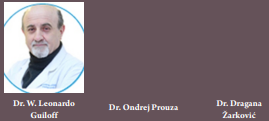
| How to Cite this article: Guiloff WL, Prouza O, Žarković D | Non-Invasive Physical Regenerative Therapies: Laser therapy, Mechanism of Action and Results. | Journal of Regenerative Science | Dec 2021; 1(1): 21-25. |


